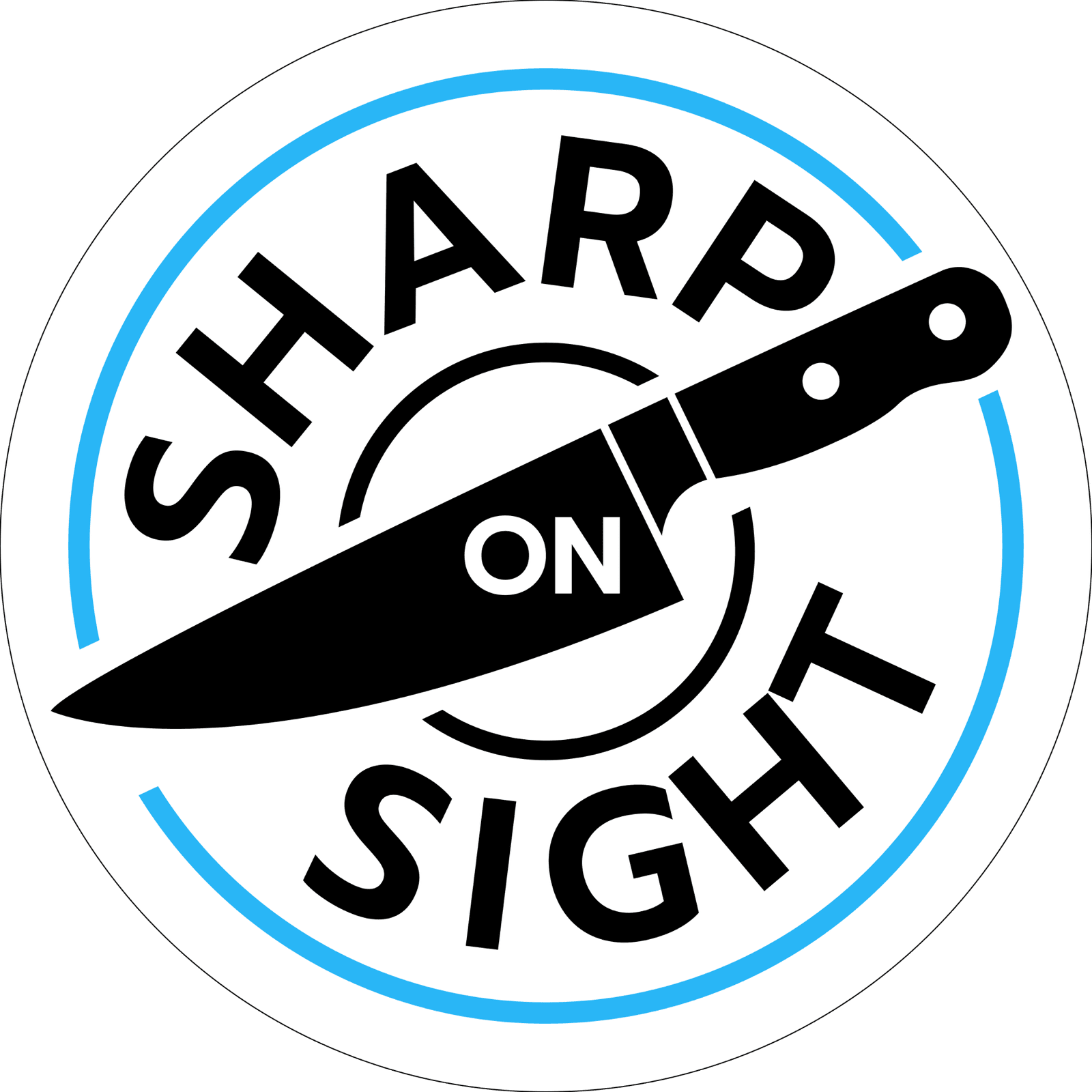Beyond the Edge: Mastering Sharpness for Hunting and Fishing Success

In the exhilarating world of hunting and fishing, your knife isn't just a tool—it's an extension of your skills, preparedness, and respect for the outdoor lifestyle. Whether you're field-dressing a deer or filleting fresh-caught trout, the effectiveness of your blade profoundly impacts your outdoor experiences. Mastering knife sharpening elevates your performance, enjoyment, and safety in the field and at the table.
Why Sharpness Matters: Efficiency and Precision
A finely honed knife ensures precision and efficiency during critical outdoor tasks. Imagine field dressing game or filleting fish with a blade that effortlessly glides through meat and bone. A sharp knife allows clean, smooth cuts, preserving meat quality and reducing waste. On the contrary, struggling with a dull knife damages meat fibers, bruises tissue, and can even puncture organs during field dressing, compromising your catch or harvest.
Additionally, efficiency in the outdoors directly translates to safety and energy conservation. Using a sharp knife requires significantly less physical exertion. Reduced effort prevents fatigue, especially crucial during extended outings or challenging conditions, where precision can quickly diminish due to tiredness. Less effort also means fewer slips or errors, minimizing the risk of injury.
Sharpening for Safety and Control
The outdoor environment is unpredictable, and control over your tools is paramount. Maintaining sharpness enhances your ability to handle knives confidently, even under less-than-ideal circumstances. A sharp knife responds predictably to each motion, granting you precise control in delicate tasks like skinning, filleting, or intricate field cuts.
Unlike dull blades that require excessive force, sharp knives slice naturally and consistently. This controlled motion prevents sudden slips or jerks that could lead to unintended injuries. The confidence provided by a keen edge enables you to perform tasks methodically and calmly, essential attributes in the wild.
Identifying When Your Blade Needs Sharpening
Recognizing when your hunting or fishing knife needs attention is crucial. Indicators of a dull blade include increased resistance during cutting, jagged cuts, and visible tearing of meat or skin. You might also notice the knife slipping or requiring excessive downward pressure, leading to uneven cuts or potentially dangerous situations.
A simple field test involves carefully running the blade across paper or lightly slicing the edge across your thumbnail (not pressing hard—just enough to feel its bite). A properly sharpened knife effortlessly slices through paper without snagging. Regularly checking your blade's sharpness ensures preparedness before any outdoor adventure.
Techniques for Optimal Sharpness
Sharpening hunting and fishing knives isn't just about maintaining a cutting edge—it's an art form rooted in precision and technique. Here are proven methods suited to both novices and experienced outdoorsmen:
1. Whetstones (Water Stones/Oil Stones)
Traditional whetstones offer unparalleled sharpening precision. Using them effectively involves:
- Selecting the Right Stone: Coarse grit (200–400) repairs damaged edges; medium grit (600–1000) refines the edge; fine grit (2000 and above) polishes and creates razor-sharpness.
- Consistent Angle Maintenance: Hunting knives typically perform best between 20°–25°, whereas fillet knives benefit from narrower angles around 12°–15°. Consistency is key; variations compromise sharpness.
- Controlled Movements: Glide the blade steadily along the stone, applying uniform pressure. Alternate sides frequently to maintain a symmetrical edge.
2. Diamond Sharpeners
Diamond sharpeners excel in quick field sharpening. They're portable, durable, and highly effective, especially for hard steel blades.
- Use similar angle recommendations as whetstones.
- Apply light pressure, letting the diamond surface do the work.
- Ideal for quick edge restoration in field scenarios.
3. Ceramic Rods and Honing Steels
Ceramic rods offer a fine honing touch between comprehensive sharpenings:
- Use after every hunting or fishing session to realign microscopic blade edges.
- Run the blade gently along the rod, alternating sides evenly.
- Honing doesn't remove substantial metal; it maintains sharpness longer.
4. Leather Strops
Stropping smooths the blade's microscopic burrs, refining sharpness:
- Apply a polishing compound to the leather.
- Use controlled, pulling motions, ensuring the spine leads and edge trails.
- Effective as a final step after stone sharpening.
Special Considerations for Outdoor Knives
Outdoor knives face harsher conditions than typical culinary knives—moisture, dirt, and exposure to bone and tougher materials quickly dull edges. Regular cleaning, drying, and applying protective coatings (like food-grade mineral oil) preserve sharpness and prevent corrosion.
After field use, always clean knives thoroughly, removing blood, tissue, or moisture. This maintenance prolongs blade life, preserves sharpness, and ensures safety and hygiene during food preparation.
Field Sharpening Essentials
Prepared outdoorsmen carry portable sharpening systems or compact diamond sharpeners. Lightweight and easily packable, these tools restore edges efficiently in the field:
- Pocket Diamond Plates: Slim, durable, effective.
- Compact Ceramic Rods: Quick, convenient touch-ups.
- Multi-purpose Sharpeners: Combine carbide, ceramic, and diamond elements for versatile edge care.
Being ready to sharpen knives on-site ensures uninterrupted activity, especially crucial during prolonged hunting or fishing trips.
Maintaining Sharpness Over Time
Regular sharpening routines extend knife life and performance significantly:
- After Each Trip: Inspect and hone your knives.
- Monthly Maintenance: Deep-sharpen using whetstones or diamond plates.
- Seasonal Checks: Evaluate blade integrity, polish, and oil to prevent corrosion and dullness.
Structured sharpening habits keep blades consistently at peak performance, enhancing every outdoor and culinary experience.
Final Thoughts: The Edge of Excellence
Sharpening hunting and fishing knives is more than maintenance—it's about respect for the wilderness, the wildlife you pursue, and your skills. The journey from field to table demands sharpness that enhances your effectiveness, preserves your catch, and ensures your safety.
Whether you're a seasoned hunter, avid angler, or someone embracing the outdoor lifestyle, mastering knife sharpening techniques is fundamental to fully enjoying and honoring every adventure. Keep your blades sharp, your techniques honed, and your passion for the outdoors thriving.
Message Sharp On Sight | Local Sharpening Pros
Ready for Razor-Sharp Precision?
Whether you're looking for a quote or just have a question, I'm here to help. Reach out, and let's bring those edges back to life.
